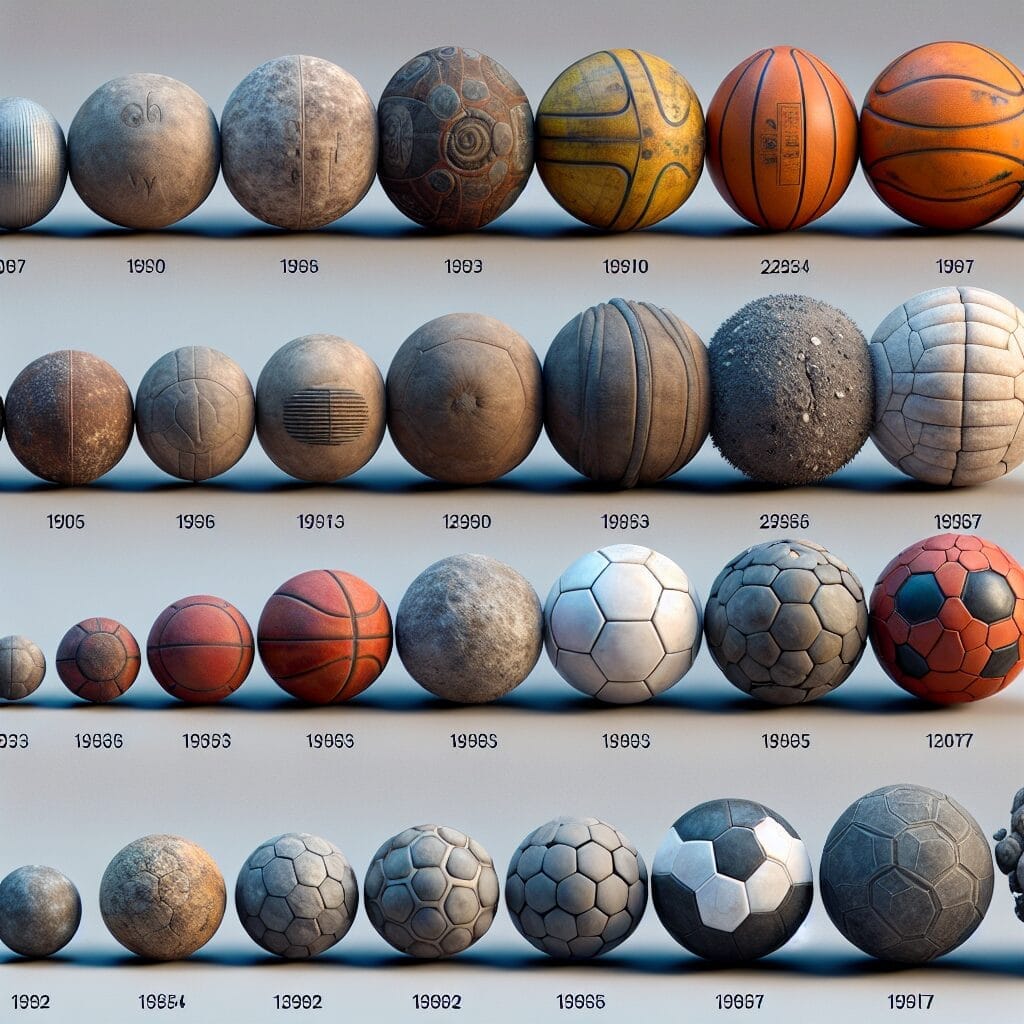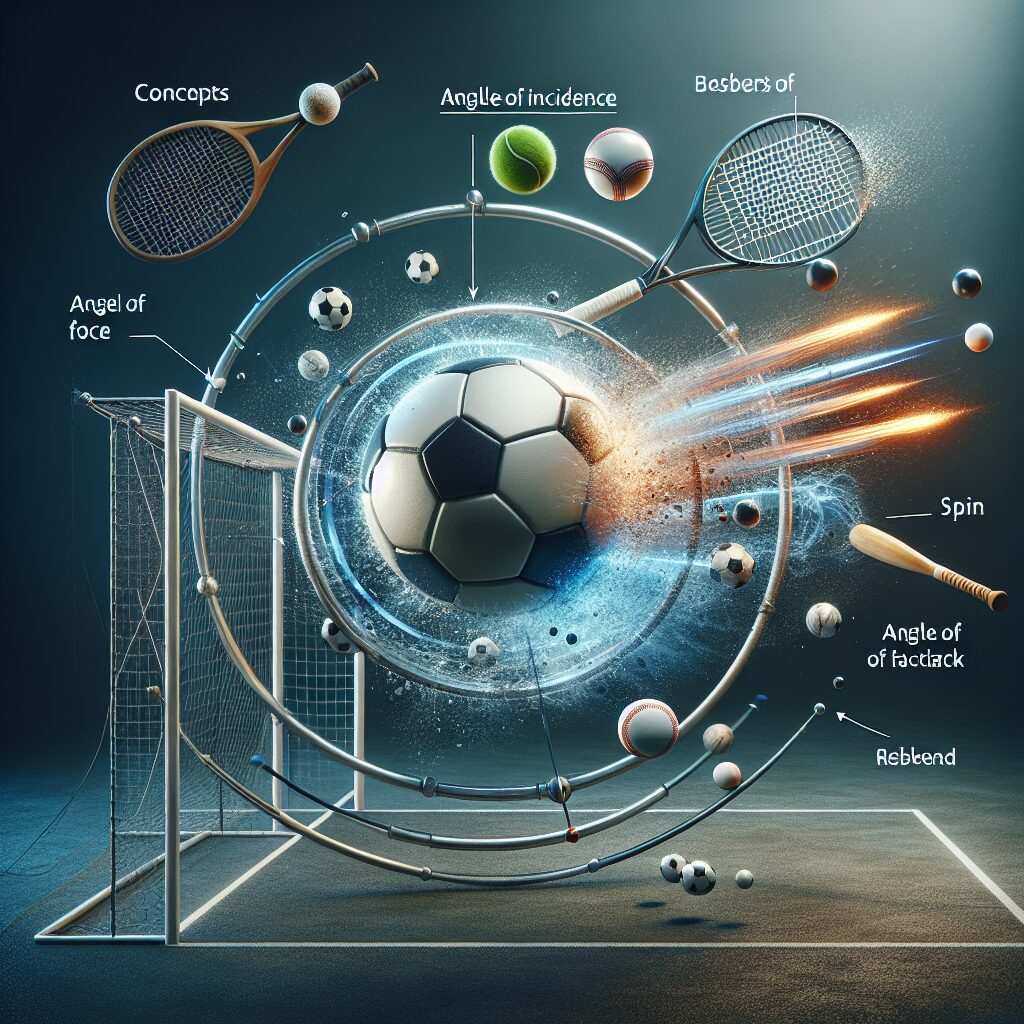Evolution of Ball Weights: From Past to Present
Did you know that the weight of balls used in sports has significantly evolved over time? From the ancient times to the present day, the evolution of ball weights has had a profound impact on the way sports are played. This development has not only enhanced game performance but also affected players’ strategies and overall gameplay. One of the key takeaways from this article will be an exploration of the different factors influencing the changes in ball weights throughout history, highlighting how these variations have shaped the sports we know today.
Throughout history, the weight of balls has undergone transformative changes driven by various factors. For instance, in ancient times, when sports like soccer or football were first played, the balls used were often made from animal bladders or inflated pig bladders. These balls were lightweight, bouncy, and had minimal control. As the years progressed, the materials used for making balls evolved, ranging from leather to synthetic materials like rubber or polyurethane. With the advancements in manufacturing techniques, ball weights were modified to improve their durability, accuracy, and overall performance on the field.
Moving forward, we will delve into the specific impacts of changes in ball weights in different sports. From the effect of ball weight variations on player fatigue in tennis to the power dynamics in sports like bowling or golf, we will explore how these changes have revolutionized gameplay strategies. Additionally, we will discuss the unique features associated with various balls used in different sports, highlighting the role of weight in influencing game techniques and outcomes. So, join us as we uncover the intriguing evolution of ball weights and its significance in the world of sports.
Key Takeaways
1. The evolution of ball weights in sports has a long history, with changes driven by advancements in technology, rules, and the aim to improve performance and safety.
2. In ancient games, ball weights varied without standardized rules, leading to inconsistencies and challenges in gameplay. The introduction of standardized ball weights helped create fair competition and establish consistent rules across sports.
3. Over time, advancements in materials and manufacturing techniques allowed for the creation of lighter and more durable balls. This led to improvements in player performance, as lighter balls enable faster and more accurate gameplay.
4. However, in certain sports like cricket, heavier balls are preferred for specific reasons. In cricket, a heavier ball can generate more swing and bounce, making it more challenging for batsmen. This highlights the importance of finding the right balance between ball weight and the desired dynamics of the sport.
5. The evolution of ball weights continues to be a topic of debate and research, with ongoing efforts to find the optimal weight that enhances performance, fairness, and player safety across various sports.
What is the history of ball weights?
The evolution of ball weights has been a fascinating journey that dates back centuries. From ancient civilizations to modern sports, the concept of using balls in various activities has evolved significantly. In this article, we will explore the history of ball weights, from their earliest forms to the present day.
Ancient Ball Weights
Ball weights have been used by ancient civilizations for a variety of purposes. In ancient Egypt, stone balls were used for recreational activities and even religious rituals. These early ball weights were typically heavy and made from materials such as stone or metals like iron.
Ancient Greeks and Romans also utilized ball weights in their sports and military training. These balls were often made of leather stuffed with various materials, including sand or lead. The weight of the ball was crucial in determining the difficulty and effectiveness of the activities.
Medieval and Renaissance Era
During the Medieval and Renaissance era, ball sports gained popularity in Europe. Royal courts and nobles engaged in games like tennis, where ball weights were crucial for gameplay. Tennis balls were initially made of leather and filled with hair, wool, or even cork. As the sport evolved, the weight of tennis balls was standardized to ensure fair play.
In addition to tennis, other ball sports such as golf and baseball were also emerging during this time. The evolution of ball weights played a significant role in shaping the rules and dynamics of these sports. Baseballs transitioned from handmade, irregular spheres to regulated, standardized balls with specific weight requirements.
Modern Ball Weights
With the advancements in technology and the rise of organized sports, ball weights have undergone significant changes in modern times. Today, most ball sports, including soccer, basketball, and cricket, use standardized balls with specific weight guidelines.
The materials used to create balls have also evolved. Synthetic materials like rubber, plastics, and synthetic leather are commonly used, making the balls more durable and consistent. The weight of modern balls is carefully determined to optimize performance, balance, and fair play.
The Role of Ball Weight in Sports
The weight of a ball carries crucial importance in various sports. It affects factors such as distance, accuracy, control, and player performance. Different sports have different weight requirements for their balls, and these requirements are carefully established to ensure fair play and standardized gameplay.
Additionally, the evolution of ball weights has led to innovations in technology and equipment. Manufacturers and designers continuously work to develop balls that meet the specific needs and requirements of each sport, enhancing gameplay and player experience.
The Future of Ball Weights
As sports continue to evolve and technology advances, the future of ball weights is likely to see further innovation. With the introduction of new materials, manufacturing techniques, and scientific research, we can expect advancements in ball design and weight optimization.
Furthermore, as sports become more inclusive and adaptive, ball weights may be customized to accommodate different player needs and abilities. This could revolutionize the sports industry and create new opportunities for athletes of all levels.
Key Tips for Understanding the Evolution of Ball Weights:
- What were the earliest forms of ball weights used in ancient civilizations?
- How did ball weights evolve during the Medieval and Renaissance era?
- What role do ball weights play in modern sports?
- What materials are commonly used in the production of modern balls?
- What factors are considered when determining the weight of a ball for a specific sport?
- How might the future of ball weights and design look like?
Frequently Asked Questions
1. What are the various ball weights used in different sports?
Ball weights vary depending on the sport. For example, in basketball, the standard weight is approximately 22 ounces, while in soccer, it ranges from 14 to 16 ounces. Tennis balls typically weigh between 2 and 2.1 ounces, while golf balls weigh around 1.62 ounces.
2. How has the evolution of ball weights impacted the performance of athletes?
The evolution of ball weights has had a significant impact on athletes’ performance. Lighter balls in sports like tennis and soccer allow for faster speeds and greater control, enhancing players’ agility and precision. Heavier balls, such as those used in bowling, require more strength and exertion, thus affecting the style and strategy of the game.
3. Has the evolution of ball weights influenced the rules and regulations of sports?
Yes, the evolution of ball weights has often resulted in changes to the rules and regulations of various sports. For instance, in basketball, the weight of the ball was standardized to ensure fair play and uniformity. Similarly, in golf, advancements in ball technology and weight distribution have led to modifications in the rules to maintain a balance between skill and equipment use.
4. Are there any safety concerns associated with using different ball weights?
Safety concerns primarily arise when using heavier balls, especially in contact sports. The impact force of a heavier ball can cause more significant injuries, making it crucial to regulate ball weights to protect athletes from potential harm. Sports organizations and governing bodies work diligently to establish guidelines that prioritize player safety while maintaining fair competition.
5. Do professional athletes have preferences when it comes to ball weights?
Yes, many professional athletes have preferences when it comes to ball weights. Some may feel more comfortable and perform better with a specific weight that suits their style of play. However, athletes’ preferences can vary greatly, and different sports require different skill sets, making it essential to choose the appropriate ball weight accordingly.
6. What factors contribute to the decision of changing ball weights in a sport?
Several factors can influence the decision to change ball weights in a sport. Technological advancements, scientific research, player feedback, and the desire to improve the overall gameplay are some of the primary considerations. Additionally, changes may be made to align with current trends, enhance spectator experience, or conform to international standards.
7. Are there any historical examples where ball weight changes transformed a sport?
A notable example of ball weight changes transforming a sport is in baseball. The transition from heavier wooden balls to lighter, cork-centered balls in the early 20th century significantly impacted the game’s dynamics. It resulted in a surge of home runs and offensive statistics, shaping the modern perception and excitement associated with the sport.
8. How do changes in ball weights affect the development of young athletes?
Changes in ball weights during the early stages of an athlete’s development can impact their skill acquisition and technique. Lighter balls may enhance their confidence, hand-eye coordination, and overall performance, while heavier balls can build strength, endurance, and muscle memory. Age-appropriate ball weights are essential in nurturing the proper foundation and long-term progression of young athletes.
9. Has technology played a role in the evolution of ball weights?
Yes, technology has played a significant role in the evolution of ball weights. Advancements in materials, manufacturing techniques, and aerodynamics have allowed for the creation of balls with specific weight distributions, resulting in better performance and playability. Continuous research and development in ball technology contribute to the ongoing evolution of ball weights across various sports.
10. Can customized ball weights be used to cater to individual needs?
Yes, in certain sports, customized ball weights can be used to cater to individual needs. However, it is important to note that customization requests are often subject to adherence to governing body regulations and fair play standards. Customized or personalized ball weights can particularly be found in some recreational activities or niche sports where flexibility in ball specifications is allowed.
Final Thoughts
Ball weights, throughout history, have undergone remarkable transformations, shaping the way sports are played and enjoyed today. From ancient civilizations to modern-day competitions, the evolution of ball weights has ensured that sports remain dynamic and adaptive to changing times. As technology continues to push boundaries, we can anticipate further advancements in ball weights, resulting in continued excitement and exploration within the world of sports.
Understanding the significance of proper ball weights goes beyond merely enhancing gameplay. It involves the well-being of athletes, the fairness of competition, and the overall development of sports. By balancing tradition with innovation, governing bodies and athletic organizations must navigate the evolving landscape of ball weights, always striving to find the perfect equilibrium that maximizes performance, safety, and the enjoyment of players and spectators alike.




